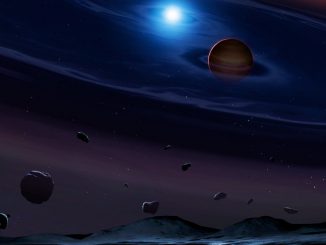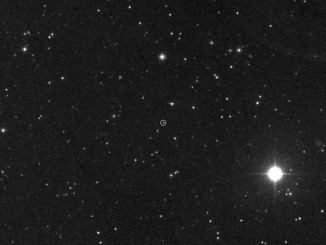
“Twinkle is a very ambitious mission,” said lead scientist, Prof. Giovanna Tinetti of UCL. “Nearly two thousand exoplanets — planets orbiting stars other than our Sun — have been discovered to date, but we know very little about these alien worlds. We can measure their mass, density and distance from their star. From that, we can deduce that that some are freezing cold, some are so hot that they have molten surfaces, some are vast balls of gas, like Jupiter, or small and rocky, like Earth. But beyond that, we just don’t know. Twinkle will be the first mission dedicated to analysing exoplanets atmospheres, and will give us a completely new picture of what these worlds are really like.”
Tinetti played a key role in the team that pioneered this technique through observations with the Hubble and Spitzer Space Telescopes. Knowledge of the chemical composition of exoplanet atmospheres is essential for understanding whether a planet was born in the orbit in which it is currently observed or whether it has migrated from a different part of its planetary system. The make-up, evolution, chemistry and physical processes driving an exoplanet’s atmosphere are strongly affected by the distance from its parent star. The atmospheres of small, terrestrial type-planets may have evolved quite dramatically from their initial composition. The loss of lighter molecules, impacts with other bodies, such as comets or asteroids, volcanic activity, or even life can significantly alter the composition of primordial atmospheres. Atmospheric composition is therefore a tracer of an exoplanet’s history as well as whether it might be habitable — or even host life.
Twinkle will analyse at least 100 exoplanets in the Milky Way. Its infrared spectrograph will enable observations of a wide range of planet types including super-Earths (rocky planets 1-10 times the mass of Earth) and hot Jupiters (gas giants orbiting very close to their suns). Some of the target planets are orbiting stars similar to our Sun and some are orbiting cooler red dwarfs. For the largest planets orbiting bright stars, Twinkle will even be able to produce maps of clouds and temperature.
“The light filtered through the planet’s atmosphere is only about one ten thousandth of the overall light from the star,” said Tinetti. “That’s a big challenge and one that requires a very stable platform outside the screening effects of Earth’s atmosphere.”
While the construction of Twinkle’s scientific instrument is led by UCL, the spacecraft itself will be built by SSTL, based in Guildford, Surrey. SSTL has innovated the concept of rapid and cost-effective spacecraft development, which has resulted in a significant export market for commercial and government Earth observation missions.
“This is an exciting opportunity to adapt the high-performance capacity we have developed at SSTL to deliver ground-breaking science,” said Dr. Susan Jason, lead engineer from SSTL.
Twinkle will be launched into a polar low-Earth orbit. The spacecraft will be built to operate for a minimum of three years, with the possibility of an extended lifetime of five years or more. The mission will be funded through a mixture of private and public sources. With a total mission cost of around £50 million, including launch, Twinkle is a factor of 10 times cheaper to build and operate than other astrophysical spacecraft developed through international space agency programs. The short development timescale and low budget are made possible through expertise already developed at UK institutions and the use of off-the-shelf components.
“The UK has already made an outstanding contribution to exoplanet detection with the WASP survey program. Twinkle is a unique chance for the UK to build on this and take the world lead in understanding exoplanet science, as well as to inspire the next generation of scientists and engineers,” said Prof. Jonathan Tennyson, senior advisor for the Twinkle mission.
For further information:
http://www.twinkle-spacemission.co.uk/



